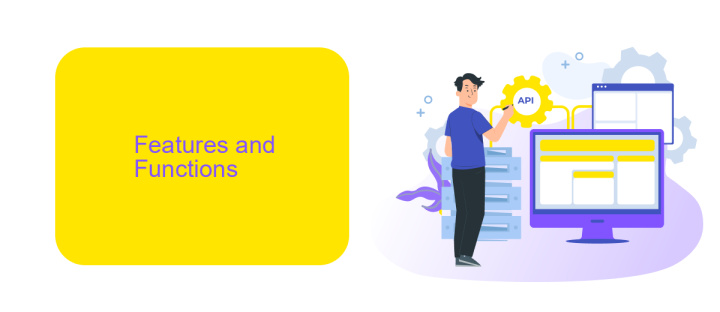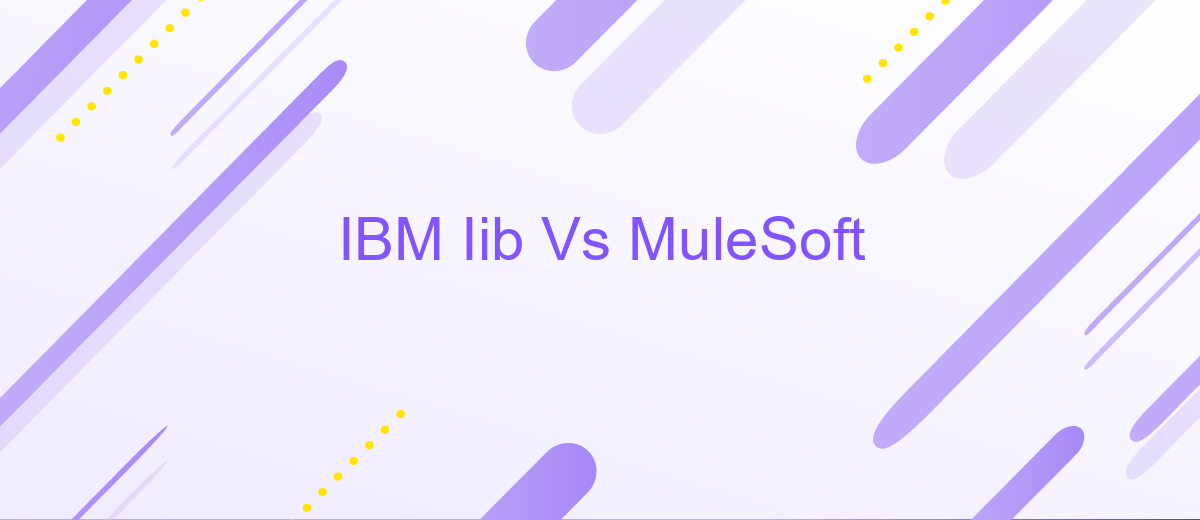IBM Iib Vs MuleSoft
In today's rapidly evolving digital landscape, businesses require robust integration platforms to streamline operations and enhance connectivity. IBM Integration Bus (IIB) and MuleSoft are two leading solutions offering diverse capabilities for enterprise integration. This article delves into a comprehensive comparison of IBM IIB and MuleSoft, highlighting their strengths, weaknesses, and optimal use cases to help organizations make informed decisions.
Introduction
In the ever-evolving landscape of enterprise integration, choosing the right tool is crucial for seamless connectivity and operational efficiency. IBM Integration Bus (IIB) and MuleSoft are two leading solutions that cater to different integration needs. Both platforms offer robust capabilities, but they have unique features that may make one more suitable than the other depending on the specific requirements of an organization.
- IBM IIB: Known for its enterprise-level integration capabilities, strong support for various protocols, and high performance.
- MuleSoft: Renowned for its flexibility, ease of use, and extensive API management features.
Understanding the strengths and weaknesses of IBM IIB and MuleSoft is essential for making an informed decision. Additionally, services like ApiX-Drive can simplify the integration process by providing automated data transfer between various applications, further enhancing the efficiency of either platform. This article aims to provide a comprehensive comparison to help organizations choose the best integration solution for their needs.
Features and Functions

IBM IIB (Integration Bus) and MuleSoft are both powerful integration platforms, each with its unique features and functions. IBM IIB offers robust message routing, transformation, and enrichment capabilities, making it ideal for complex enterprise environments. It supports a wide range of protocols and data formats, ensuring seamless integration across diverse systems. Additionally, IBM IIB provides advanced monitoring and management tools, enabling businesses to maintain high performance and reliability in their integration processes.
On the other hand, MuleSoft stands out with its API-led connectivity approach, which emphasizes the creation and management of APIs to facilitate integration. MuleSoft's Anypoint Platform offers a comprehensive suite of tools for designing, building, and managing APIs, making it easier for developers to create scalable and reusable integration solutions. For organizations seeking to streamline their integration processes further, services like ApiX-Drive can be invaluable. ApiX-Drive automates data transfer between various applications, reducing manual effort and enhancing efficiency. Both IBM IIB and MuleSoft provide extensive support for cloud and on-premises deployments, catering to the diverse needs of modern businesses.
Technical Comparison

When comparing IBM IIB (Integration Bus) with MuleSoft, several technical differences stand out. Both platforms offer robust integration capabilities, but they cater to different needs and preferences.
- Architecture: IBM IIB employs a message broker architecture, which is ideal for complex, enterprise-level integrations. MuleSoft, on the other hand, uses an API-led connectivity approach, making it more agile and scalable.
- Development Environment: IBM IIB uses the Eclipse-based Integration Toolkit, which can be complex for new users. MuleSoft provides Anypoint Studio, also Eclipse-based, but generally considered more user-friendly and intuitive.
- Deployment: IBM IIB supports on-premises and some cloud deployments, while MuleSoft excels in hybrid and multi-cloud environments.
- Integration Capabilities: MuleSoft offers extensive pre-built connectors and templates, facilitating quicker integrations. IBM IIB is highly customizable but may require more development effort.
Both IBM IIB and MuleSoft are powerful in their own right, but the choice depends on specific business needs. For those looking for a more user-friendly and scalable solution, MuleSoft might be the better option. Additionally, tools like ApiX-Drive can further streamline integration processes by automating data transfer between various applications and services.
Use Cases and Industry Adoption

IBM IIB and MuleSoft are widely adopted integration platforms used across various industries for their robust capabilities in connecting disparate systems. IBM IIB, known for its enterprise-level integration solutions, is predominantly utilized in sectors such as finance, healthcare, and telecommunications. MuleSoft, on the other hand, is favored for its flexibility and API-led connectivity, making it popular in retail, technology, and manufacturing industries.
Both platforms offer unique advantages that cater to specific use cases. IBM IIB excels in scenarios requiring high-volume transaction processing and complex system integrations. MuleSoft, with its API-first approach, is ideal for organizations looking to build seamless API ecosystems and enhance digital transformation efforts.
- Financial Services: Secure, high-volume transaction processing with IBM IIB.
- Healthcare: Integration of diverse medical systems and data sources using IBM IIB.
- Retail: Building customer-centric APIs and enhancing e-commerce platforms with MuleSoft.
- Technology: Accelerating innovation through API-led connectivity with MuleSoft.
In addition to these platforms, services like ApiX-Drive can further streamline integration processes by offering user-friendly tools for connecting various applications and automating workflows. This makes it easier for businesses to manage integrations without extensive technical expertise, thereby increasing operational efficiency and reducing time to market.
Pricing and Licensing
When comparing IBM IIB and MuleSoft in terms of pricing and licensing, it's important to note that IBM IIB typically follows a more traditional licensing model. IBM IIB offers both perpetual and subscription-based licenses, with pricing often based on the number of processors or cores used. This can make it a significant investment for larger enterprises, but it also provides robust support and a wide range of features that can justify the cost for complex integration needs.
On the other hand, MuleSoft adopts a subscription-based pricing model, which can be more flexible and scalable for businesses of different sizes. MuleSoft's pricing is generally based on the number of applications, data volumes, and environments. This can make it more accessible for mid-sized companies or those looking to scale their operations gradually. Additionally, for those seeking to streamline their integration processes, services like ApiX-Drive can offer valuable assistance by providing easy-to-use tools for connecting various applications, thereby enhancing the overall efficiency and reducing the complexity of integrations.


FAQ
What are the main differences between IBM IIB and MuleSoft?
Which platform is better for cloud-based integrations?
How do the licensing models of IBM IIB and MuleSoft differ?
Can both IBM IIB and MuleSoft handle real-time data processing?
What are the options for implementing and automating integrations with these platforms?
Apix-Drive will help optimize business processes, save you from a lot of routine tasks and unnecessary costs for automation, attracting additional specialists. Try setting up a free test connection with ApiX-Drive and see for yourself. Now you have to think about where to invest the freed time and money!

